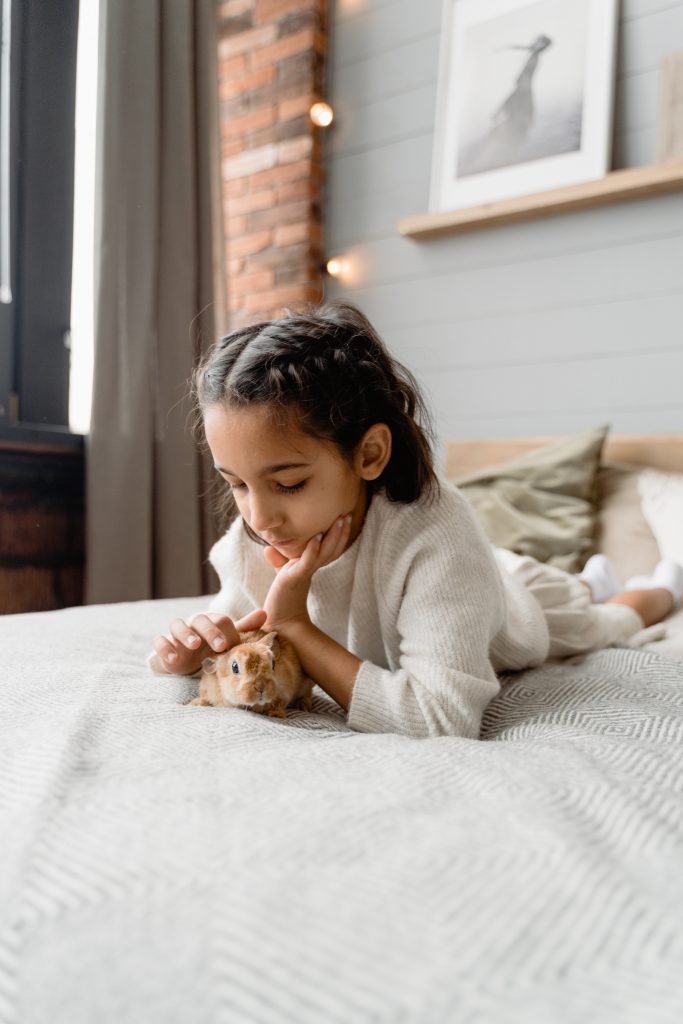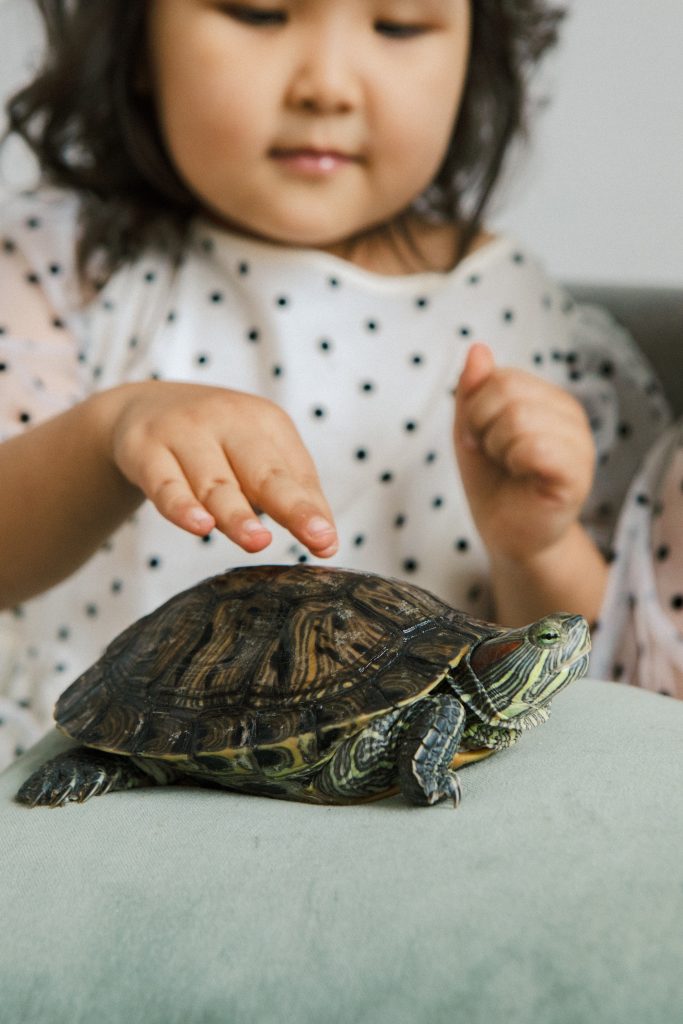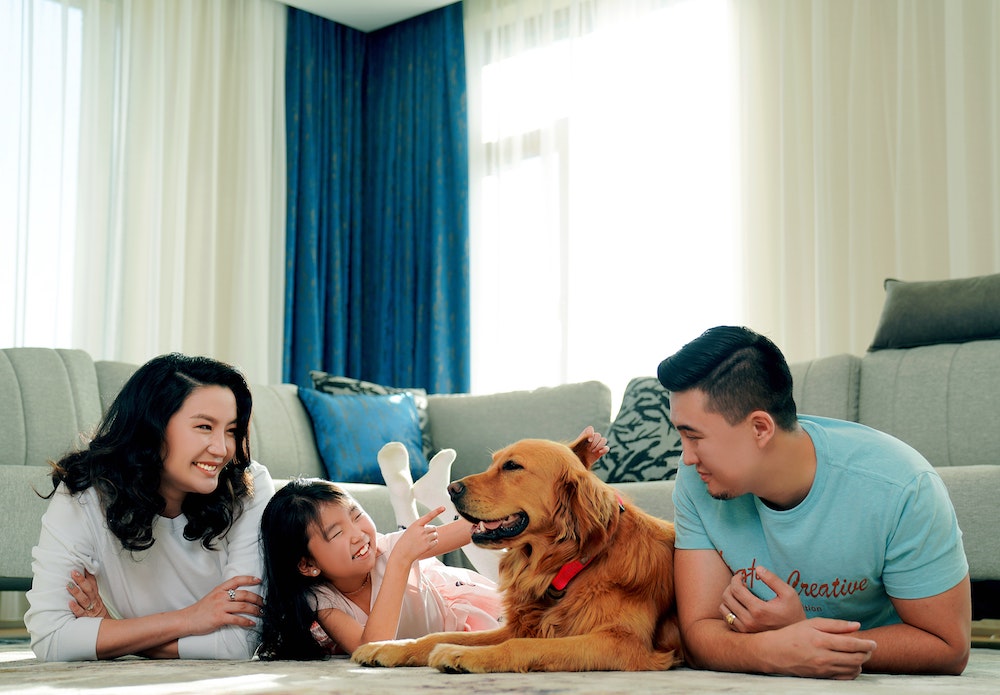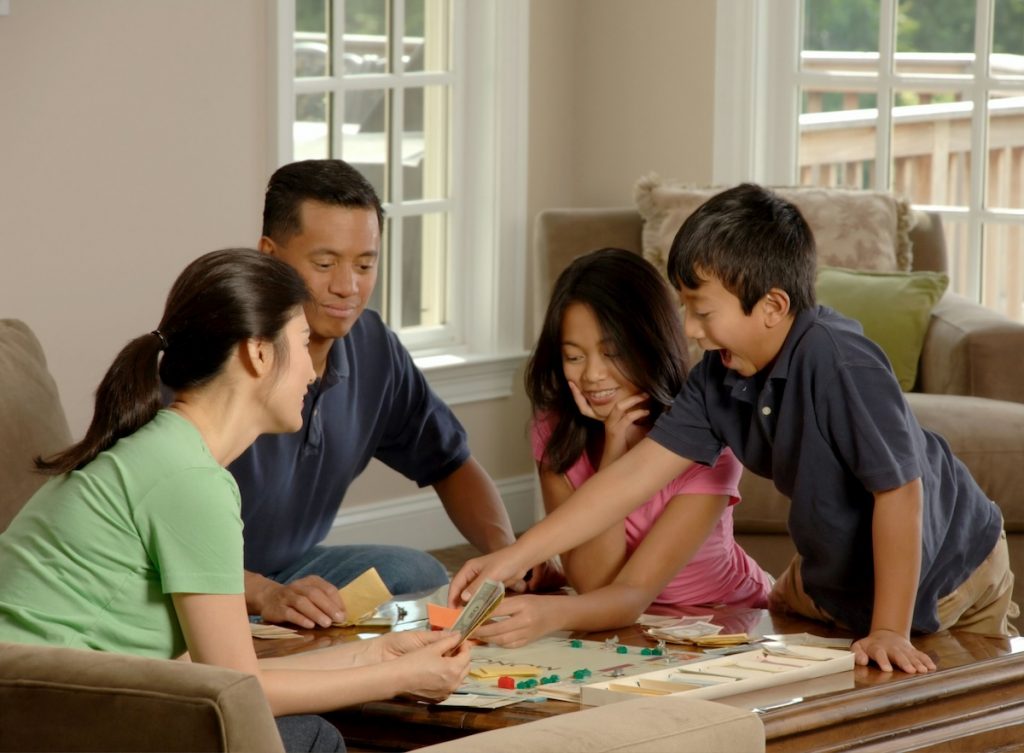Looking to adopt a furry friend into your household? Prepare your kids for a family pet by reading books on animals at the library or playing pretend, with books like Little Jellycat My Best Pet or Melissa & Doug Examine & Treat Vet Play Set ($29.90 to $56.90). Other options for introducing them to animals include carefully selected YouTube videos, or visiting family and friends with pets. This will help them learn to take care of and increase their knowledge on animals. Preschoolers are unable to care for an animal on their own and should be supervised when playing with them. Hence, only adopt a pet if you’re committed to taking care of it long-term and after much serious consideration.
Choosing a Family Pet

Decide as a family which pet to get, starting with various pros and cons. If you’re staying in a HDB, you can keep one of these dog breeds, fish, hamsters, guinea pigs, red-eared terrapins and green tree frogs in HDBs but not cats. The exception to this is the Love Cats project in Chong Pang. Consult a vet and your children’s healthcare provider to determine what type of animal is right for your family. This is vital especially if your child is immunocompromised or has allergies. The vet can also share what diseases the pet could transfer to your family.
Before getting a pet, do intensive research, learning about the specific breed, its health issues or behavioural traits, its diet, how frequently they need to exercise or be played with. Some good options for younger kids might include fish, hamsters or guinea pigs. Another consideration is your pet’s lifespan and that your child will grieve at its passing.
Older or Younger Pets
Rather than getting a kitten or a puppy, consider whether an older animal might be a better fit. Some positives of having a younger animal are that it’s super cute, has fewer bad habits to break and will likely qualify for pet insurance. You’ll also be acquainted with their behaviour and medical history early on. However, there’ll be a bigger cost due to vaccinations, spaying or neutering, training classes, toys and accessories. Additionally, you’ll have to invest more time in training them, and furniture and other items could get ruined.
On the contrary, senior or older pets are more easygoing with less exercise needs. They’ll most likely already be potty trained, and also trained to follow basic commands, and less likely to destroy your furniture. Older pets may also be more tolerant of your kids as they have been socialised to more people and situations. Their temperament and personality are also already apparent. The downsides though, are that they may incur veterinary costs, they may need more assistance with mobility in the later years, and you may have to help them unlearn some behaviours.
Test Drive
Before you commit to this massive responsibility, try having your child play with a friend or relative’s pets, so you can gauge how ready they are to have a pet. Another way is to bring your little ones to dog parks, visit community cats or to the Kitten Sanctuary to interact with the animals. Otherwise, start with a toy dog like these.
If your children have genuinely expressed an interest to get a pet long enough that you can be sure it’s not a passing fancy, consider fostering a dog from Save our Street Dogs or SOSD. You should be able to foster the dog for at least two months, or until they are adopted, with the full agreement of everyone in your household. As above, you will have to supervise interaction between the dog and your children, to ensure their safety. Any existing pets in your home should be able to get along with other animals and have up-to-date vaccinations. In order to ensure the dog’s well-being, SOSD volunteers will also visit your home to check on the dog. It’s also best to have prior experience with dogs, and friendly neighbours.
Sharing Responsibility

Give your child simple tasks like filling water bowls, helping to clean up the pet, and play with them under your supervision. As they grow older, you can give them a little more responsibility if they seem capable. Do note that children below three to four years old are still unable to control their aggression and angry impulses, so you’ll have to monitor them around the animals. Therefore, you’ll have to be primarily responsible for your pet. Show your children how to take care of the pet by giving it food, water and exercise. Prepare for its arrival by choosing a good veterinarian, and buying supplies like leashes, bowls and toys for your pet. For example, try these dog toys from Louie Living ($14.90 to $16.90), made from tough textured woven fabric with reinforced edges.
Set expectations for both your pet and children. Advise your children that it may take time for your pet to adjust in its new environment before it can showcase its true personality. Help your children to be patient during this period of adjustment. Likewise, your children will need reminding to do their tasks. All family members should be consistent with the pet’s boundaries, household rules and training.
Living with Your Pets

With a pet, you may encounter additional problems relating to your home’s health such as unusual odours or decreased indoor air quality. Hence, you may need an air purifier such as these from Airfree ($199 to $869) to destroy dust mites, bacteria, viruses, pet dander and other organic allergens. Additionally, your children may develop allergies and asthma, while some pets might carry parasites, viruses or bacteria.
Pet Proofing the Home
Prepare for your pet’s arrival by securing garbage can lids, tape or cover electrical cords, keep household chemicals inaccessible from pets and children, and human food away. Your pet will likely investigate any small objects it can reach, so the home has to be kept as tidy and neat as possible.
Pet Allergens
Before getting your pet, you might be unaware that you or your children are allergic to it. Look out for signs of chest tightness, wheezing, trouble breathing, congestion, eczema or hives, especially if they last more than two weeks. Pets that don’t cause allergies usually don’t have fur or feathers, such as fish, turtles or snakes.
Try minimising allergies by keeping pets out of the bedroom, and not hugging or kissing it. If you can’t resist the urge to, make sure to wash your hands with soap and water. Brushing and grooming or bathing your pet can also help to get rid of allergy-causing dander. Another member of the household who isn’t allergic to your pet can do this, or bring it to a professional groomer. Keep pet areas clean, washing cat and dog beds once a week, and small pets’ cages and bedding often.
Next, use a vacuum cleaner with a high-efficiency particulate (HEPA) filter, and vacuum as often as you can. Reduce clutter and carpets, and use wooden or plastic blinds rather than cloth curtains. Other essentials include an air purifier, and synthetic pillows.
Resources for Adopting Animals:
Dogs
Cats
Hamsters
Rabbits
House Rabbit Society Singapore
Relevant Reads: Prep the Pet
This article originally appeared on Motherswork.













